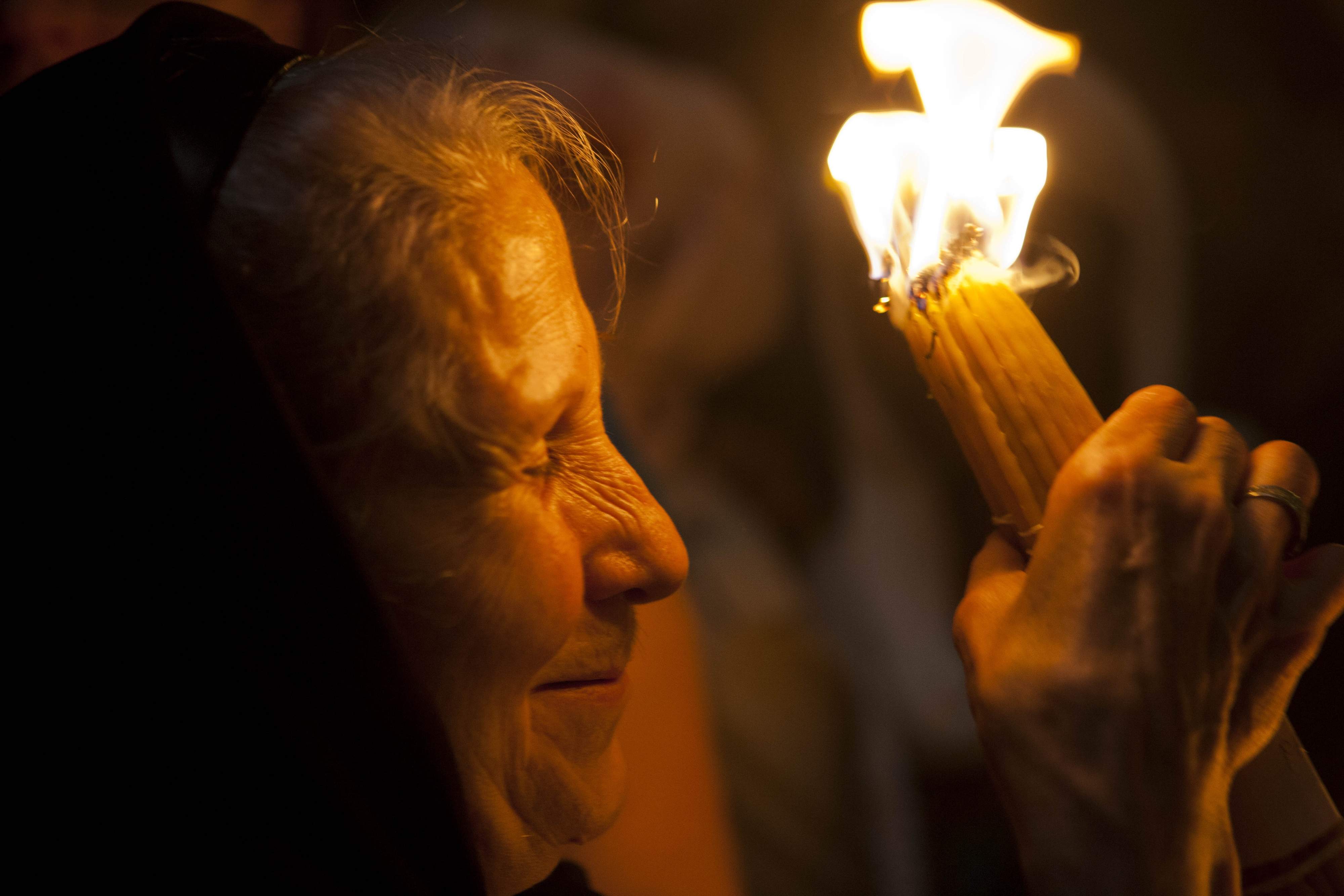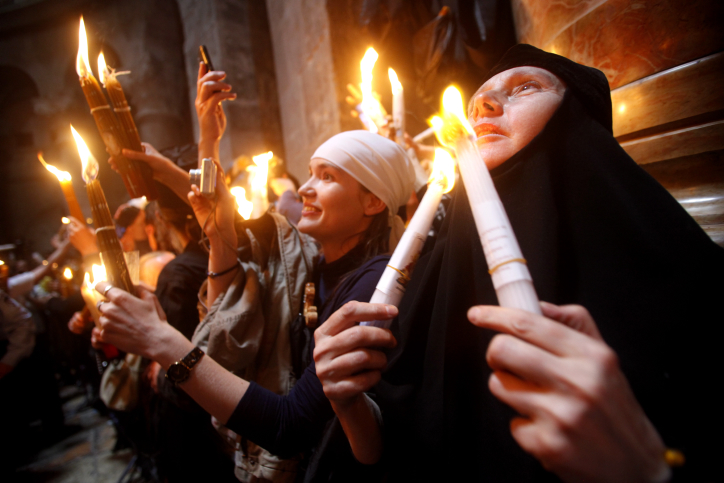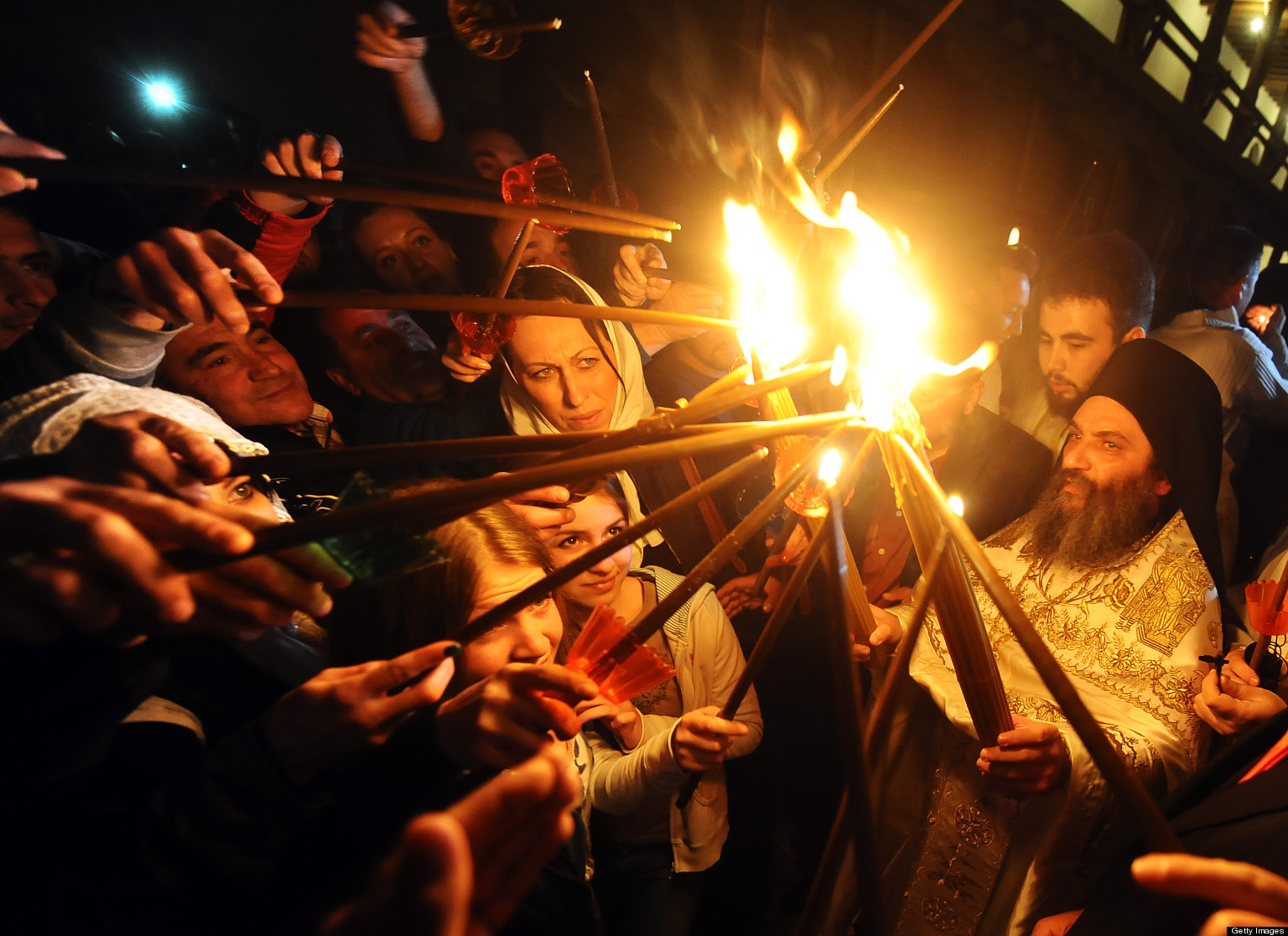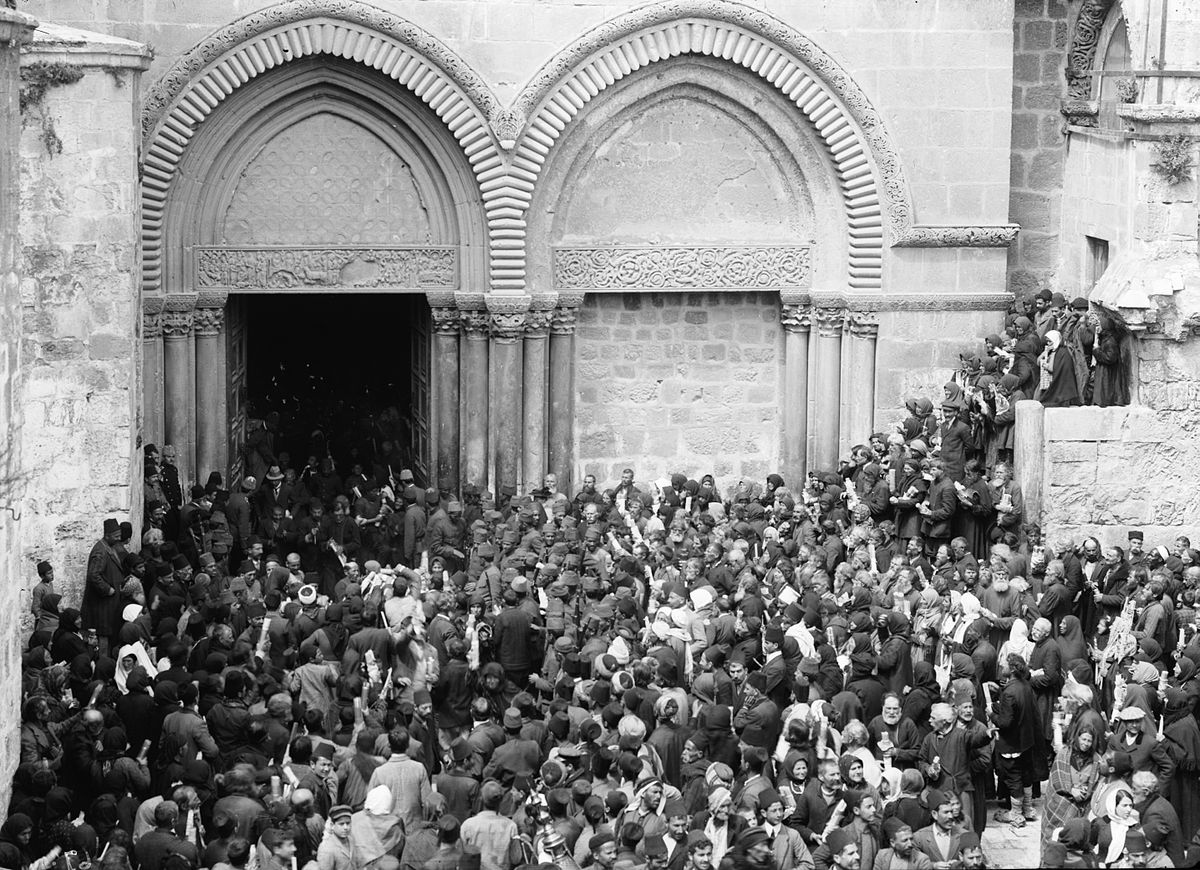
The Holy Fire

The Holy Fire
Because of the diversity of denominations in Palestine, we celebrated Easter two times this year: on the 1st of April, we celebrated the Catholic (Western) Easter, and just a week later, we celebrated the Orthodox (Eastern) Easter!
One of the holiest days for Christian Orthodox believers in Palestine and around the world is Holy Saturday, the night before Easter. We can’t go through Easter without talking about this day where thousands of Orthodox Christian pilgrims from around the world gather in the Church of the Holy Sepulchre in Jerusalem’s Old City to receive the Holy Fire.
Holy Fire Ceremony
The ceremony takes place in the Church of the Resurrection in Jerusalem, where Christ was crucified, buried, and where He finally rose from the dead. Holy Saturday is the Saturday following the first Sunday of the spring equinox and Jewish Passover. The Holy Fire is the most famous miracle in the world of Eastern Orthodoxy. It has taken place at the same time, in the same manner, in the same place every single year for centuries. No other miracle is known to occur so regularly and so steadily over time.
At around 11:00 in the morning, the Christian Arabs in the church chant traditional hymns in loud voices. These chants date back to the Turkish occupation of Jerusalem in the 13th century, a period in which the Christians were not allowed to chant anywhere but in the churches. “We are the Christians; we have been Christians for centuries, and we shall be forever and ever. Amen!” They chant at the top of their voices accompanied by the sound of drums. The drummers sit on the shoulders of others who dance vigorously around the Holy Ciborium. At 1:00 pm the chants fade out, and then there is silence. This tense silence is charged from the anticipation of the great demonstration of God’s power for all to witness.
Then, the Orthodox Patriarch enters the tomb and kneels in holy fear in front of the place where Christ lay after His death, and where He rose again from the dead. He says certain prayers that have been handed down to the church through the centuries.
While the Patriarch is inside the chapel kneeling in front of the stone, it is far from quiet outside. One hears a rather loud mumbling, and the atmosphere is very tense.
Shortly thereafter, a delegation from the local authorities elbows their way through the crowd. At the time of the Turkish occupation of Palestine, they were Muslim Turks; today they are Israelis. Their function is to represent the Romans at the time of Jesus. The Gospels speak of the Romans that went to seal the tomb of Jesus so that His disciples would not steal His body and claim He had risen. In the same way, the Israeli authorities on this Holy Saturday come and seal the tomb with wax. Before they seal the door, they follow a custom to enter the tomb and to check for any hidden source of fire, which would make a fraud of the miracle.
The Patriarch of Jerusalem waits, sometimes a few minutes, but normally the miracle happens immediately after he has said the prayers. From the core of the very stone on which Jesus lay, an undefinable light pours forth. The light rises out of the stone as mist may rise out of a lake. It almost looks as if the stone is covered by a moist cloud, but it is light. This light behaves differently each year. Sometimes it covers just the stone, while other times it gives light to the whole sepulchre, so that people who stand outside the tomb and look into it will see it filled with light. The light does not burn, as it is of a different consistency than normal fire that burns in an oil lamp. At a certain point, the light rises and forms a column in which the fire is of a different nature, so that the Patriarch is able to light his candles from it. When he receives the flame, he goes out and gives the fire first to the Armenian Patriarch, then to the Coptic and then to all the people in the church.
Holy Fire History
The first records of the Holy Fire date back to the fourth century. Back then, it was called the Holy Light. Ancient Arab sources also bear testimony to the miracle. In the Church of the Holy Sepulchre, during the first centuries of Christianity, there was a custom of blessing and lighting the evening lamp before the Easter service. Later the tradition gradually transformed into a ceremony and became known as the Miracle of the Fire’s Descent.
It is important to mention that not all churches here in Palestine recognize the authenticity of the descent of the fire.
At BethBC, we have a neutral opinion about it, yet we respect our brothers and sisters who believe in it. We can’t deny that this day is very important in our Christian traditions. We enjoy watching and taking part in it, and we want all of our brothers and sisters around the world to know about our events and celebrations and how much we enjoy celebrating the resurrection of Christ many times and in different ways!
Happy Easter from the Holy Land to the whole world!
References: http://www.holyfire.org/eng/
Amira is the Communications Coordinator of Bethlehem Bible College. She is a committed Palestinian Christian who has a passion for writing about the intersection of faith and seeking justice for her fellow countrymen. To read more of her writings sign up for Bethlehem Bible College’s monthly newsletter.








